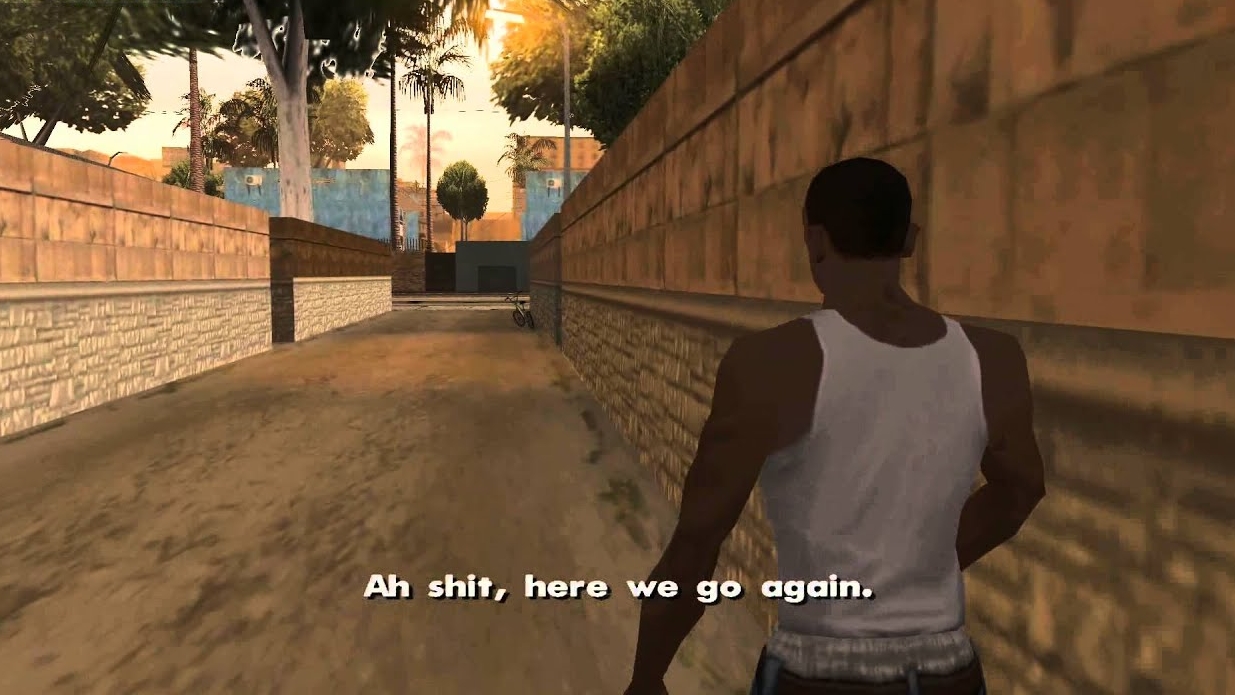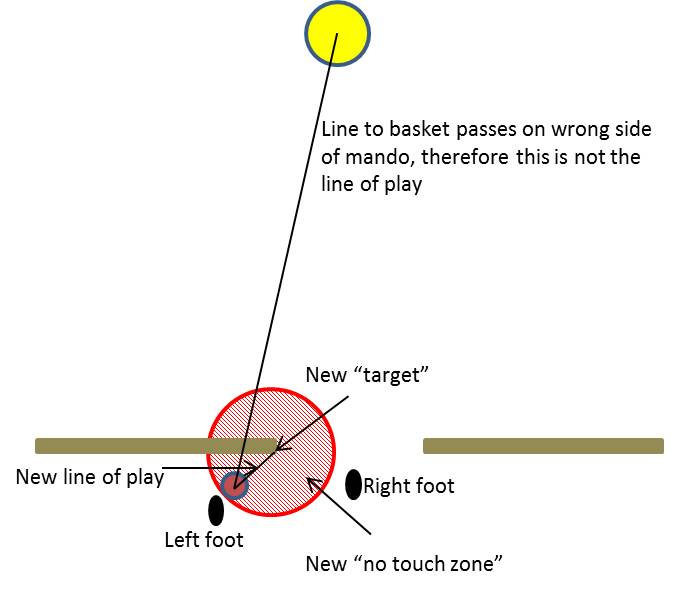- Joined
- May 6, 2011
- Messages
- 650
The TD has a double mandatory defined by two trees, with no drop zone. TD has declared that shots passing on the outside of the double mandatory must be played backwards in order to come through the mando in the proper direction.
A player misses the mando, plays backwards toward the mando, and comes up short, resting at the base of the basket side of the mando tree. Direction of play is still defined backward toward the mando tree.
Q: To play the next shot, how is the stance determined?
(a) is the mando tree treated like a single point, and no supporting point can be closer to it?
(b) do you instead consider the line between the mando trees, extended outward, and no supporting point can be closer to that line?
In (a), the player could have one foot correctly behind the lie, and step out toward the tee, with the other foot on the tee-side of the tree (but no closer to it) so as to reach around the tree to throw toward the basket. In (b) such a stance would not be allowable because you'd be stepping across the line.
I'm not asking whether or not the TD *should* declare such a rule, that's a separate issue.
A player misses the mando, plays backwards toward the mando, and comes up short, resting at the base of the basket side of the mando tree. Direction of play is still defined backward toward the mando tree.
Q: To play the next shot, how is the stance determined?
(a) is the mando tree treated like a single point, and no supporting point can be closer to it?
(b) do you instead consider the line between the mando trees, extended outward, and no supporting point can be closer to that line?
In (a), the player could have one foot correctly behind the lie, and step out toward the tee, with the other foot on the tee-side of the tree (but no closer to it) so as to reach around the tree to throw toward the basket. In (b) such a stance would not be allowable because you'd be stepping across the line.
I'm not asking whether or not the TD *should* declare such a rule, that's a separate issue.



